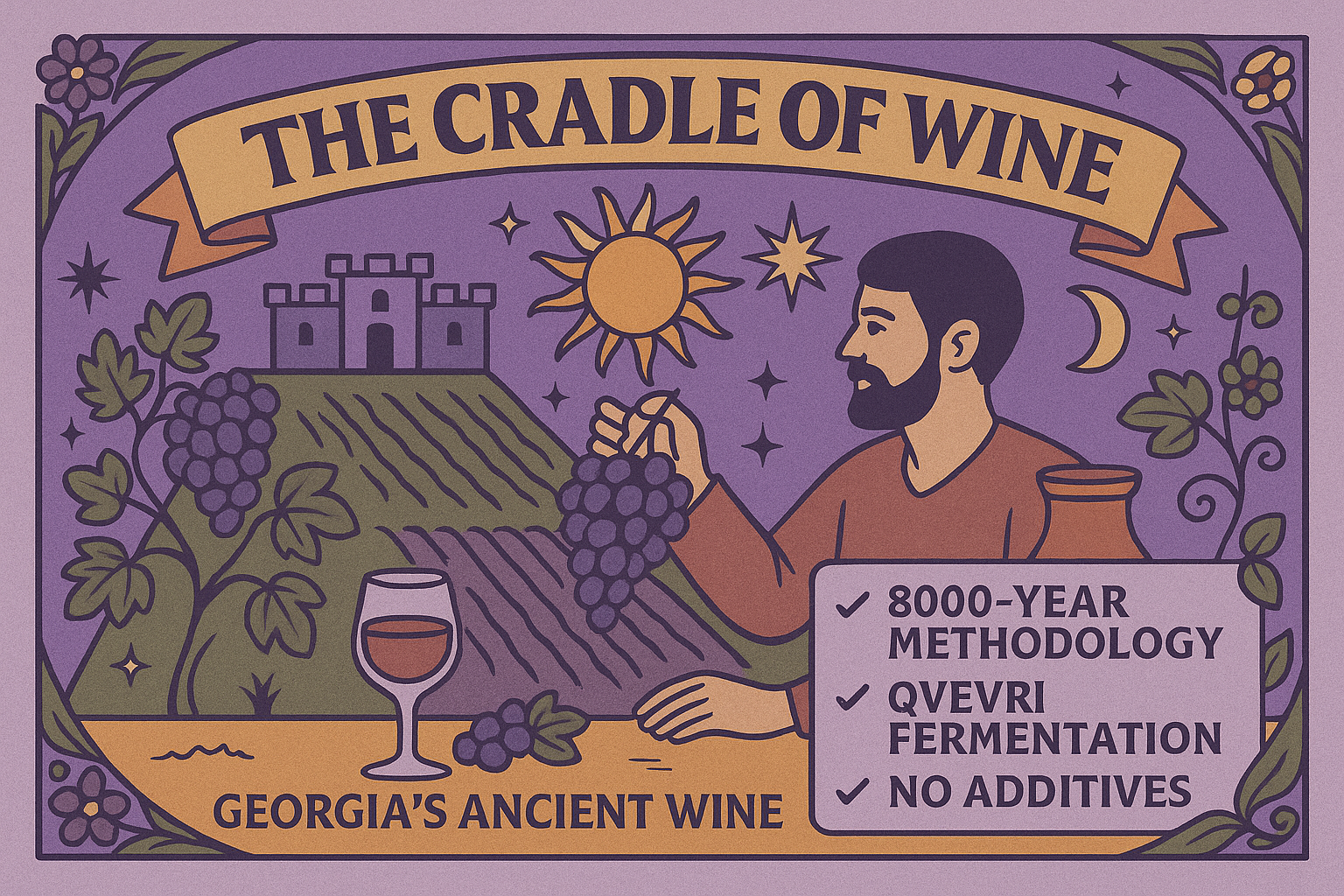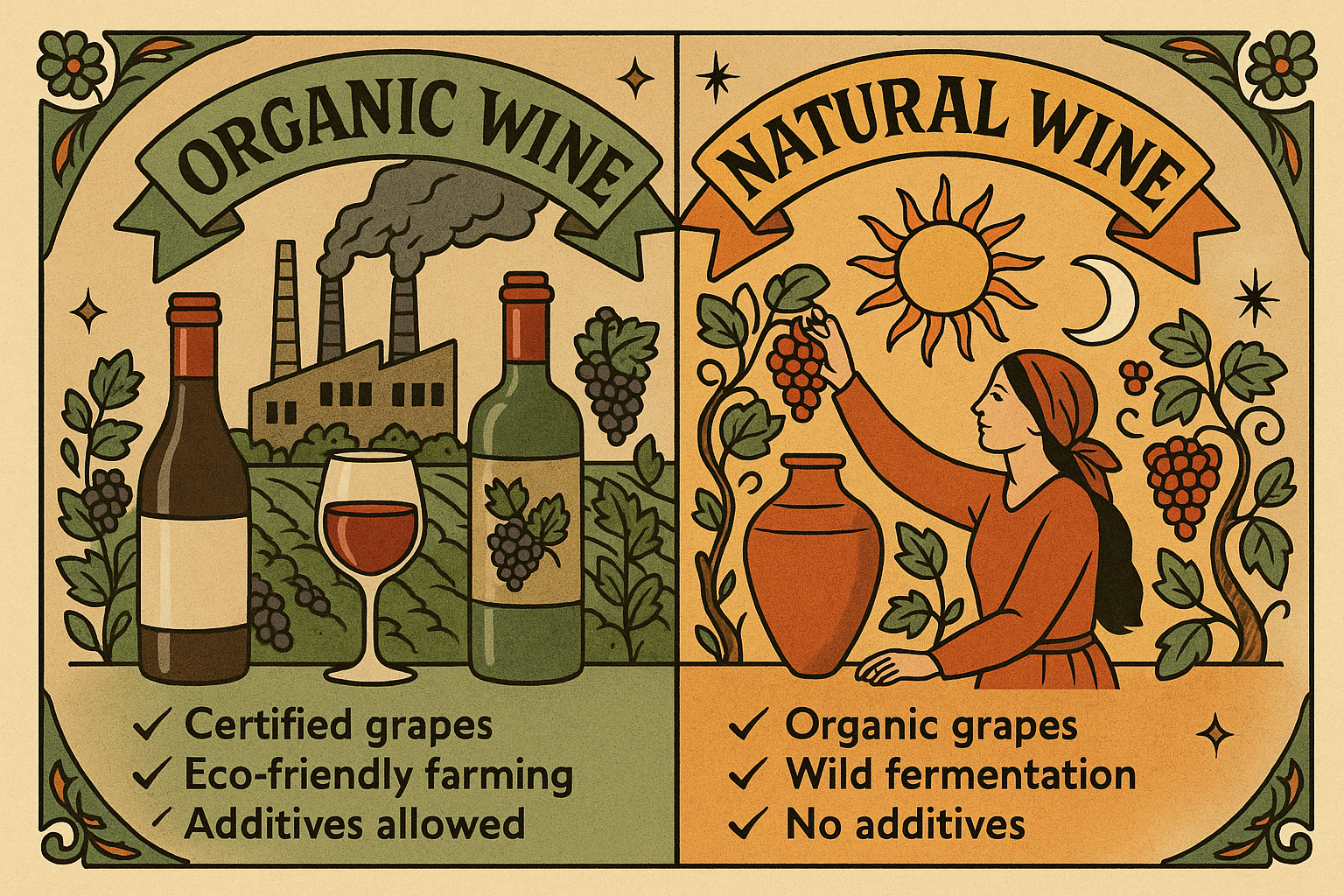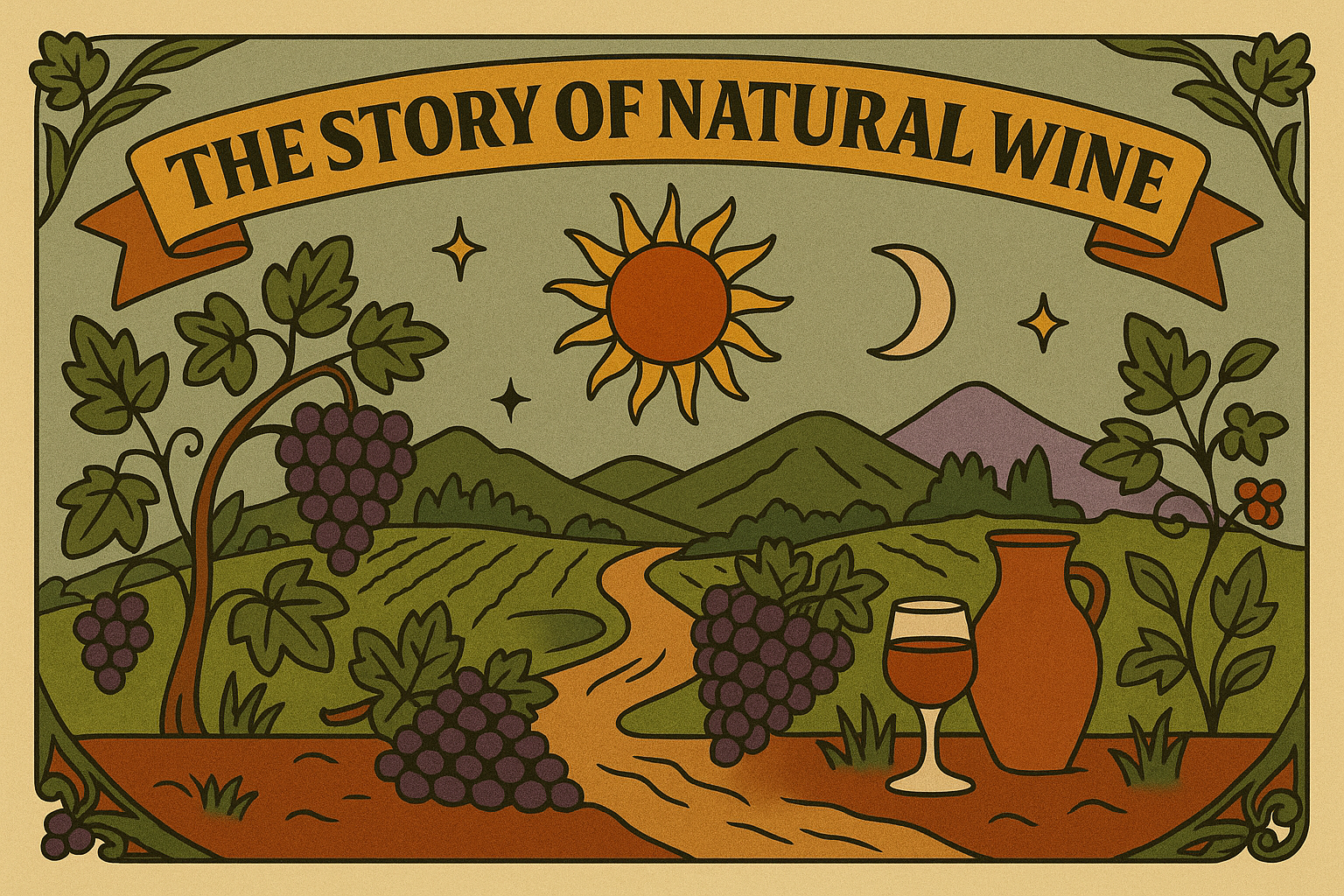
The Cradle of Wine: Georgia’s 8,000-Year Winemaking Tradition
The Quick Answer
-
Sakartvelo (საქართველო) or Georgia = The birthplace of wine — winemaking here goes back over 8,000 years (according to UNESCO).
-
Qvevri (ქვევრი) — ancient clay vessels buried underground, still used today.
-
Unique flavors — bold, skin-contact amber wines, deep reds and deep whites. Georgia offers over 500 different grape varieties (not all wined, yet).
-
UNESCO heritage — Georgian qvevri winemaking is officially recognized as an Intangible Cultural Heritage of Humanity.
👉 In short: Georgia isn’t just part of old-world wine — it’s the origin story.
What Makes Georgian Winemaking Unique?
Unlike modern stainless steel tanks or oak barrels, Georgian wines are fermented and aged in qvevri — handmade clay vessels buried underground for natural temperature control. Also, in Georgian tradition white and red grapes are handled similarly, as in, both ferment naturally through yeasts from the grape skin. This allows for natural, spontaneous fermentation to occur, and the wine to be full of taste, and necessary nutrients for preservation.
Key features:
✅ Qvevri fermentation → slow, natural, earthy balance.
✅ Whole grape fermentation → skins, stems, and seeds = tannins, depth, and amber hues for whites, and blackish bodies and velvety mouthfeels for the reds
✅ No additives, no manipulation → wild yeast only, no added sulfites or chemicals.
✅ Health effects → considerably healthier choice, and if consumed responsibly, no hangover is expected.
The Different Styles of Georgian Wine
Georgia has 500+ indigenous grape varieties, giving it one of the most diverse wine heritages in the world. Not all wined these days, but winemakers are exploring more and more. They are also finding new old ways to make wine, rediscovering tastes and thus providing amazing experiences for wine lovers. Here's some exceptional methods:
-
Deep amber wines → White grapes fermented on skins inside a clay vessle (a qvevri) → golden-orange color, complex texture.
-
Orange wines → White grapes fermented on skins in any vessel apart from qvevri.
-
Lighter ambers (like Tsitska & Tsolikouri) → Crisp, high-acid whites from western Georgia.
-
Qvevri rose's → Blends of white and red grapes fermented in clay vessels, resulting in unreal tastes and and deep rose and light purple hues.
Why the World is Falling in Love with Georgian Wine
-
Diversity of flavors is a key factor. Georgian wines offer an amazing diversity. Also, fermented naturally, the grape and yeast find it easier to express their natural essence, thus providing amazing mouth and feel experiences.
-
Export boom → bottles now reaching Europe, the U.S., and Asia. This leads to more and more people finding out about these wines, and thus compounds the interest even more.
-
Natural wine movement → winemakers from Georgian have been working hard year after year making amazing wines and showcasing them around the world. Also, resisting the industrialisation of this special culture. Their dedicated work has definitely reaped results, and the natural wine movement prospers.
-
🥂 Cultural preservation → UNESCO recognition made the final case for Georgia's cultural connection with wine, ensuring this heritage continues. If you do visit this delicious country, you will see grape symbology expressing itself in every detail.
Experience 8,000 Years of Winemaking
Every bottle of Georgian wine tells a story of heritage, craftsmanship, and an unbroken lineage of winemakers. At Kinto Natural, we go around Georgia looking for exceptional wines, handmade and natural, small batch makes. We offer our favorites in the shop, try out and see for yourself what 8000 years of history tastes like :)
👉 Shop our Georgian natural wines →
FAQ
Is Georgia really the birthplace of wine?
Yes — archaeological finds show grape residue in qvevri dating back 8,000 years.
What makes Georgian wine different?
Qvevri fermentation, whole-grape methods, and zero additives give it a bold, untamed style.
What is amber wine? Orange wine?
Amber wine is made by fermenting white grapes with skins and seeds within a clay vessel, creating deep color and texture.
Orange wine is the same, apart from the vessel - anything apart from clay. Wine is called amber wine only if fermented in clay.







Leave a comment
This site is protected by hCaptcha and the hCaptcha Privacy Policy and Terms of Service apply.